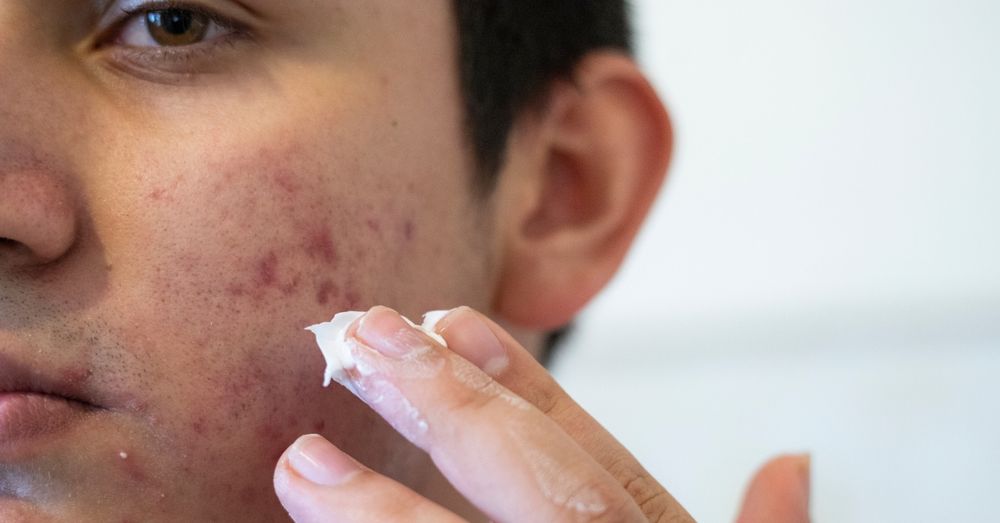Exploring Skin Disease: Determining and Treating Acne Scars for Healthier Skin
Acne scars stand for a substantial worry for people seeking to maintain healthy skin, as they can influence both look and self-esteem. Understanding the numerous types of scars, from atrophic to hypertrophic, is crucial for determining suitable therapy alternatives. While expert treatments like chemical peels and microneedling can be effective, the relevance of individualized care plans can not be overemphasized. Preventative measures play a crucial role in lessening future scarring. As we discover these elements, one need to take into consideration just how the best approach can lead to transformative results.
Understanding Acne Marks

The body's all-natural recovery process can cause either atrophic marks, which show up as anxieties in the skin, or hypertrophic marks, which are elevated and arise from overproduction of collagen. Additionally, the emotional toll of acne scars should not be underestimated; many individuals report feelings of humiliation, anxiety, and lowered self-confidence. This psychological worry can affect social communications and overall quality of life.
Addressing acne scars requires a comprehensive understanding of their development and influence. Awareness of the capacity for lasting repercussions related to neglected marks can motivate individuals to look for proper therapies. Early intervention and reliable administration methods can significantly improve skin appearance and improve emotional durability, emphasizing the significance of recognizing the intricacies bordering acne scars.
Types of Acne Scars
Acne marks can be classified into distinctive types, each displaying special characteristics and needing specific therapy methods. acne and acne scars treatment. The key sorts of acne scars consist of atrophic, hypertrophic, and keloid marks

Hypertrophic scars, in comparison, are increased above the skin degree and are the result of excessive collagen production throughout the healing procedure. They commonly stay within the borders of the initial acne sore. Keloid scars are similar but prolong beyond the initial injury site, creating larger, raised locations that can be scratchy or painful.
Understanding these types of scars is crucial for choosing ideal therapy options. Different marks might react better to particular treatments, such as laser treatments, fillers, or medical interventions, stressing the significance of a customized method to acne mark monitoring.
Determining Your Scars
When reviewing the look of your skin, it is vital to properly determine the kind of marks existing, as this will certainly inform the most efficient therapy technique. Acne scars generally come under 2 groups: hypertrophic and atrophic marks. Atrophic marks, which are one of the most usual, appear as clinical depressions or indentations on the skin. These can further be identified right into ice-pick scars, boxcar scars, and rolling marks, each showing distinct attributes and requiring various approaches for analysis.
Hypertrophic marks, my link on the various other hand, are elevated and happen as a result of extreme collagen production during the healing procedure. Recognizing the specific attributes of your scars-- such as size, texture, and deepness-- is crucial for appropriate recognition (acne and acne scars treatment). Additionally, consider the circulation of scars throughout your skin, as this can show the intensity and period of the acne condition
Involving with a skin doctor can provide beneficial insights into the nature of your scars, aiding in the distinction in between various types. An extensive understanding of your marks will ultimately result in a much more customized and effective therapy strategy, making sure a clearer and much healthier complexion.
Treatment Options Offered
Recognizing the specific type of acne marks present on your skin lays the groundwork for checking out effective treatment choices. Usual types of acne marks include atrophic (depressed), hypertrophic (elevated), and post-inflammatory erythema.
For atrophic marks, choices such as chemical peels, microneedling, and laser resurfacing are extensively made use of. Chemical peels make use of acids to remove the outer layer of skin, promoting brand-new cell development.
Hypertrophic scars can be treated with corticosteroid shots to flatten the mark or laser therapy to lower redness and improve appearance. Silicone gel sheets and stress dressings may likewise aid in handling elevated marks.
On top of that, facial fillers can temporarily fill in Homepage depressions from atrophic scars, while medical excision might be ideal for serious instances. Each therapy alternative has its benefits and factors to consider, making it necessary to consult with a dermatologist. They can provide personalized suggestions based upon the kind and seriousness of your marks, along with your skin type and overall health.
Tips for Prevention
Efficient prevention strategies can significantly lower the likelihood of creating acne scars. Utilizing non-comedogenic items assists stop clogged pores, which can worsen acne.
Staying clear of the impulse to stand out or choose acne sores is important, as this can bring about deeper skin damages and increase the danger of scarring. Rather, take into consideration using a chilly compress or over the counter therapies to lower swelling and soreness.
Sun security is an additional important element of avoidance; ultraviolet (UV) rays can dim marks and impede the healing process. Using a broad-spectrum sunscreen with a minimum of SPF 30 daily can shield the skin and promote even healing.
Finally, preserving a well balanced diet plan rich in vitamins, anti-oxidants, and minerals sustains skin health and healing. Remaining hydrated and taking care of anxiety levels can likewise play a considerable function in minimizing acne flare-ups. By carrying out these methods, individuals can dramatically reduce their opportunities of developing acne scars.
Final Thought
In final thought, understanding and recognizing acne scars is essential for effective treatment and attaining healthier skin. Different kinds of acne marks, consisting of hypertrophic and atrophic scars, necessitate specific treatments more tips here tailored to specific requirements. Therapy options range from chemical peels and microneedling to corticosteroid shots, highlighting the significance of consulting a skin specialist. Additionally, embracing a mild skin care routine and protecting the skin from UV direct exposure can considerably add to the prevention of additional scarring and general skin health and wellness.
The body's all-natural healing procedure can result in either atrophic marks, which show up as anxieties in the skin, or hypertrophic scars, which are increased and result from overflow of collagen. They are additional split into 3 subtypes: ice choice scars, boxcar scars, and rolling scars. Acne scars normally fall right into two groups: atrophic and hypertrophic marks. These can further be identified into ice-pick scars, boxcar marks, and rolling marks, each displaying distinctive qualities and requiring various techniques for analysis.
Numerous types of acne marks, consisting of atrophic and hypertrophic marks, demand details treatments tailored to specific requirements.